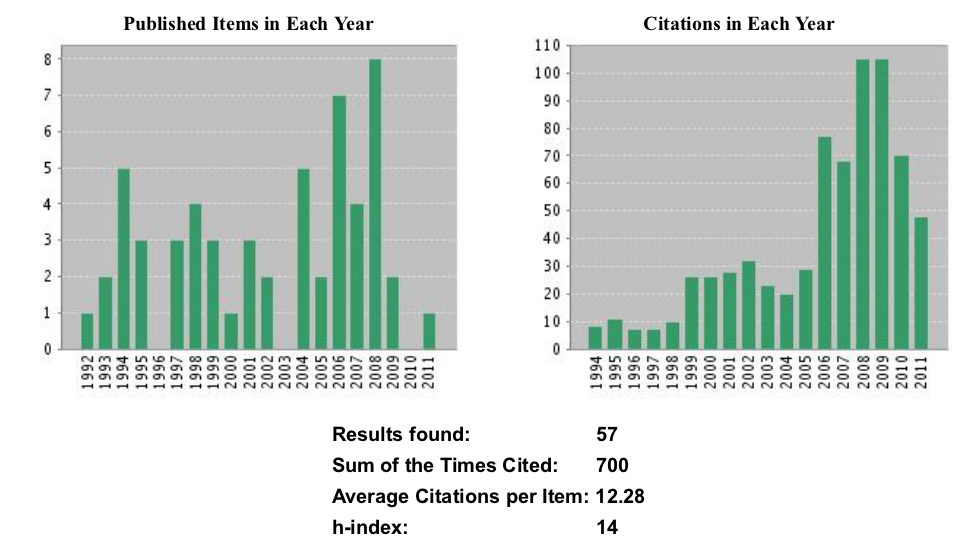
 |
Technical Analysis Scientific Workof Peter StallingaUniversity of The Algarveupdated: August 2011 |
| Documents: 1. Academic activity 2. Pedagogic activity 3. Technical analysis scientific production (current) |

Comments to List of Publications (LoP), H-Index and Citation Index Study by Web of Knowledge (WoK)
Thus I arrive
at the
following conclusions:
| WoK-6 | "Metal-insulator-metal transistor", P. Stallinga, V.A.L. Roy, Z.-X. Xu, C.-M. Che, Advanced Materials 20, 2120 (2008) | Revolutionary idea Innovation of the year Asia Nature Asia Materials Research Highlight |
|
| WoK-12 |
"Metal contacts in thin-film transistors", P. Stallinga, H.L. Gomes, Org. Electr. 8, 300 (2007) | Revolutionary idea |
|
| - |
Monograph: "Electrical Characterization of Organic Electronic Materials and Devices", Peter Stallinga, (Wiley 2009) | A completely worked out
model |
|
| WoK-1 |
"Electronic transport in organic materials. Comparison of Band Theory with Percolation/(Variable Range) Hopping Theory", Peter Stallinga, Advanced Materials 23, 3356 (2011) | Extremely controversial |
|
| WoK-55 |
"Electron Paramagnetic Resonance of Molecular Hydrogen in Silicon", P. Stallinga, T. Gregorkiewicz, C.A.J. Ammerlaan, and Yu.V. Gorelkinskii, Phys. Rev. Lett. 71, 117 (1993) | H2 in Si |